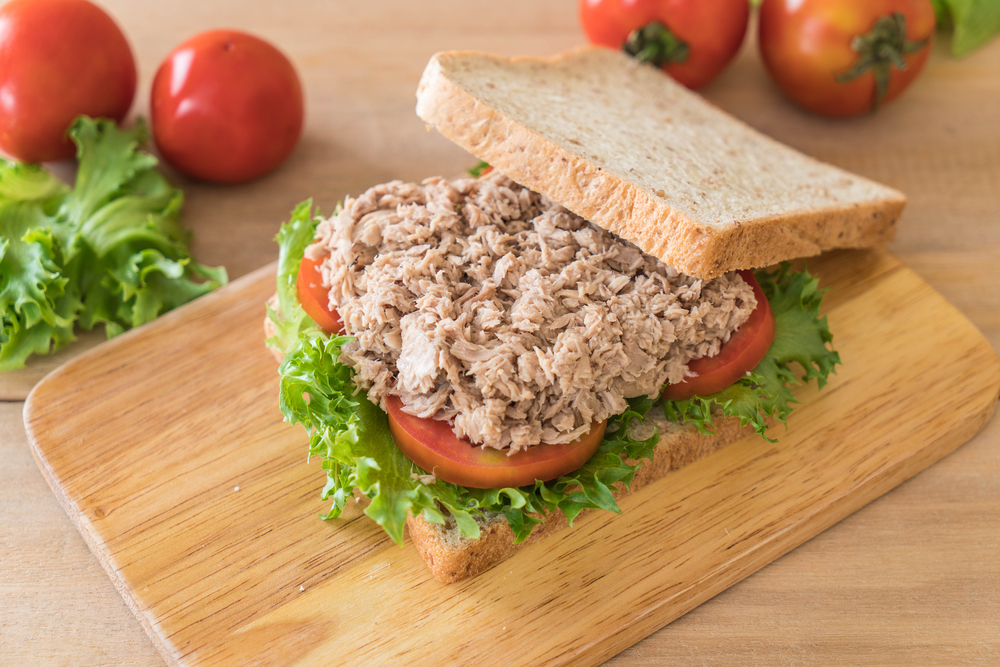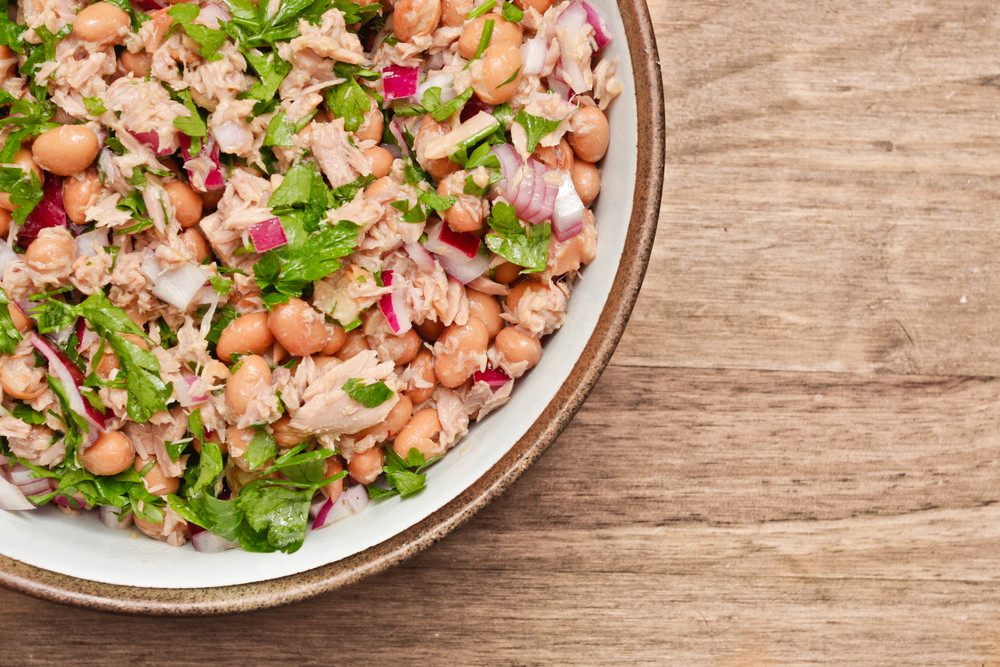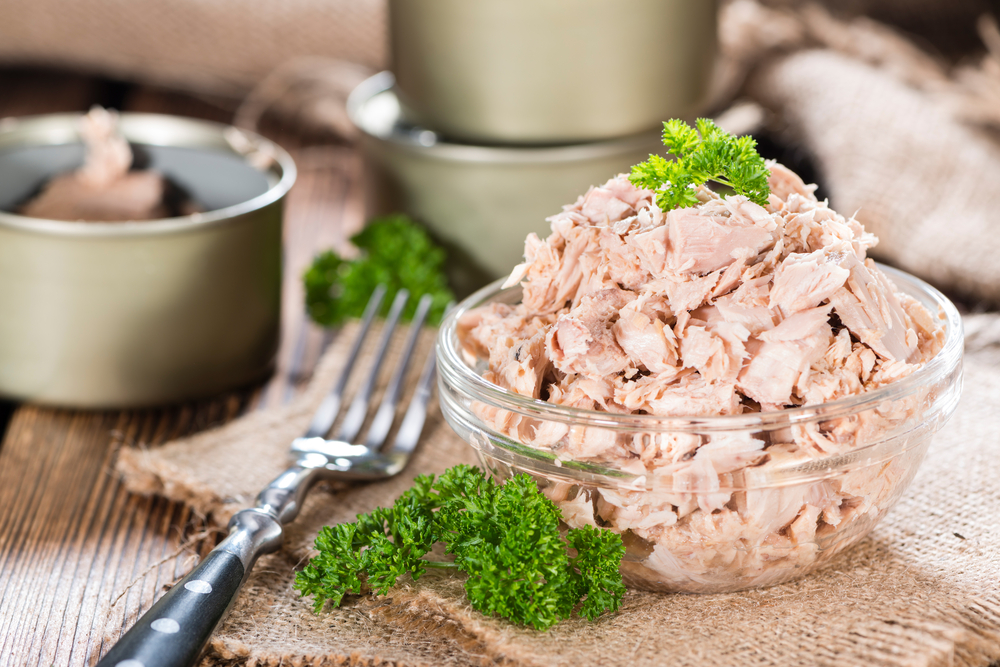Whether it is canned or otherwise, tuna salad is a very popular dish that is made from cold-holding tuna, and if you decide that you want to make a dish with cold-holding tuna, then the question is how cold can tuna be in order to be safe to eat. So what is the highest temperature that you can use for cold-holding tuna?
Well, this article is going to answer that! Let’s get started, and then you will know when to eat your tuna, and when to toss it!
What Temperature Should Cold Tuna Salad Be Kept At For Sandwiches?
Tuna sandwiches are a great food for parties or even a great afternoon where you just need to eat a sandwich and recline on the couch. However, tuna sandwiches can very easily go bad if you don’t watch over them, and that can be a massive problem if you have a lot of extra sandwiches.
Now, a tuna sandwich that is preserved will be fresh in a 40 degrees Fahrenheit fridge for about three to five days. So you’ve got about three to five days for the tuna, but the rest of the ingredients that go into the tuna sandwich, such as the mayonnaise and the eggs, will spoil much faster and will also cause the bread to become very soggy after about 24 hours in the fridge.

So a tuna salad sandwich should be consumed as quickly as possible, often the very next day, in order to make sure that you get the flavor and the freshness. If you leave your tuna salad sandwich out the fridge, then it will spoil after two hours, so make sure to place your leftovers in the fridge and eat them as quickly as you can.
Holding Temperature For Cold
Now before we delve into the world of cold-holding tuna, let’s quickly get into what cold-holding is. Cold-holding is whenever cold food is kept cold, but is also ready to serve to the public. Now, this is a delicate balancing act because cold-holding foods will stop germs from growing on the food itself, but it can also easily cause the food to spoil.
The best temperature for cold-holding food is at or below 41 degrees Fahrenheit, because that will allow the food to remain chilled, but it also won’t freeze it so you can eat the tuna whenever you want. However, you need to keep the food at 41 degrees, and also reuse it within one week of removing it from the fridge. If it goes past one week or enters the danger zone of 42 degrees Fahrenheit to 134 degrees Fahrenheit, then you need to throw out the tuna because germs have grown on it and that makes it dangerous to eat.
Maximum Temperature Permitted For Keeping Cold Tuna Salad
Whether it is inside of a salad, a sandwich, or even eaten with some crackers on its own, you need to keep cold tuna salad at or below 41 degrees Fahrenheit. Now, storing cold tuna salad does take some special steps as well, and you really don’t want to be eating rotten tuna because that will mess up your stomach.

Whenever you put cold tuna salad in the fridge, you need to store the tuna salad in an airtight container with a lid. Additionally, you can take the salad plate and wrap it securely in foil or plastic wrap, just make sure that you wrap it very tightly as well. Still, keep in mind that no matter how well your store your tuna salad, you should still eat your cold tuna salad between two to five days of storing it.
Otherwise, you can’t keep the cold tuna salad out for more than two hours in order to preserve the mayonnaise and the other ingredients in the cold tuna salad, because they will go bad fast and you don’t want to eat that!
Plus, if you live in a warmer climate, you will find that tuna (as well as other meats) will spoil much faster. So once you open your tuna package, whether to make a salad or not, you need to refrigerate it because it will spoil and stink up the house.
Highest Temperature That Can Be Held Cold
But if you leave tuna out for cold-holding, it needs to be at 40 degrees Fahrenheit or below. Because the USDA says that between 41 degrees Fahrenheit and 134 degrees Fahrenheit is the ‘danger zone’, which is not something you want to travel down the highway to! So make sure that your fridge matches that temperature, so that way bacteria will not grow on it.
There are two types of bacteria that can grow on your food as it reaches the danger zone. The first is ‘spoilage bacteria’ that can make the food spoil, resulting in discoloration in color, texture, and a funny smell. Additionally, pathogenic bacteria can give you food poisoning if you eat the spoiled food.

Since tuna spoils fast once it reaches this danger zone of temperature, you might eat food that is covered in spoilage bacteria before you see the pathogenic bacteria, and that can cause some health problems for your stomach. So if the tuna salad or tuna salad sandwich gives you any cause to be suspicious of it, then you need to throw it out and err on the safe side.
Conclusion
If you want to cold-hold tuna to make a sandwich, a salad, or just so you can serve it later, it is very important to know what spoiled tuna looks like and also when to throw it out. So make sure that you keep an eye on the tuna that you have either in your fridge or on your counter, and keep an eye on the hours or days that you’ve saved the tuna so you can eat it whenever you want. Plus, you also get the amazing flavor of your tuna, even after you have saved it for a few days!







